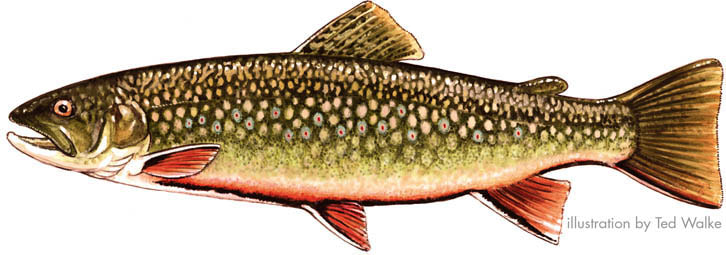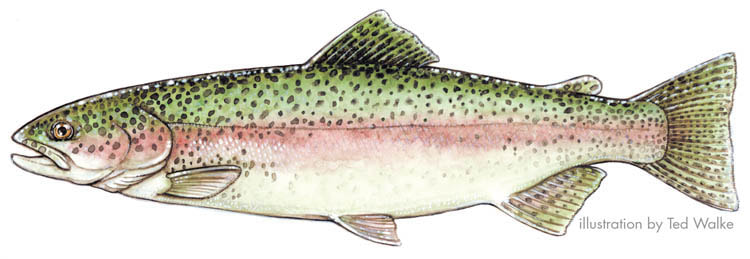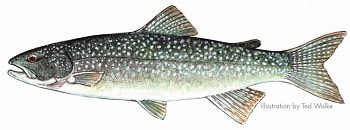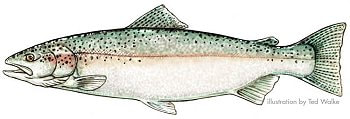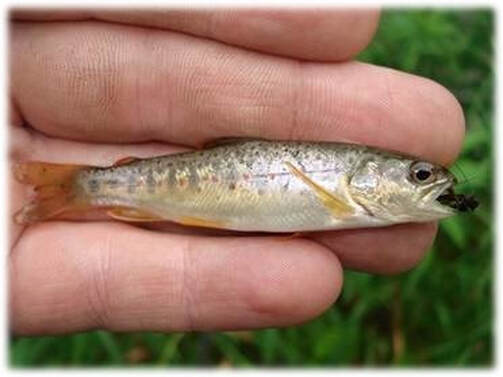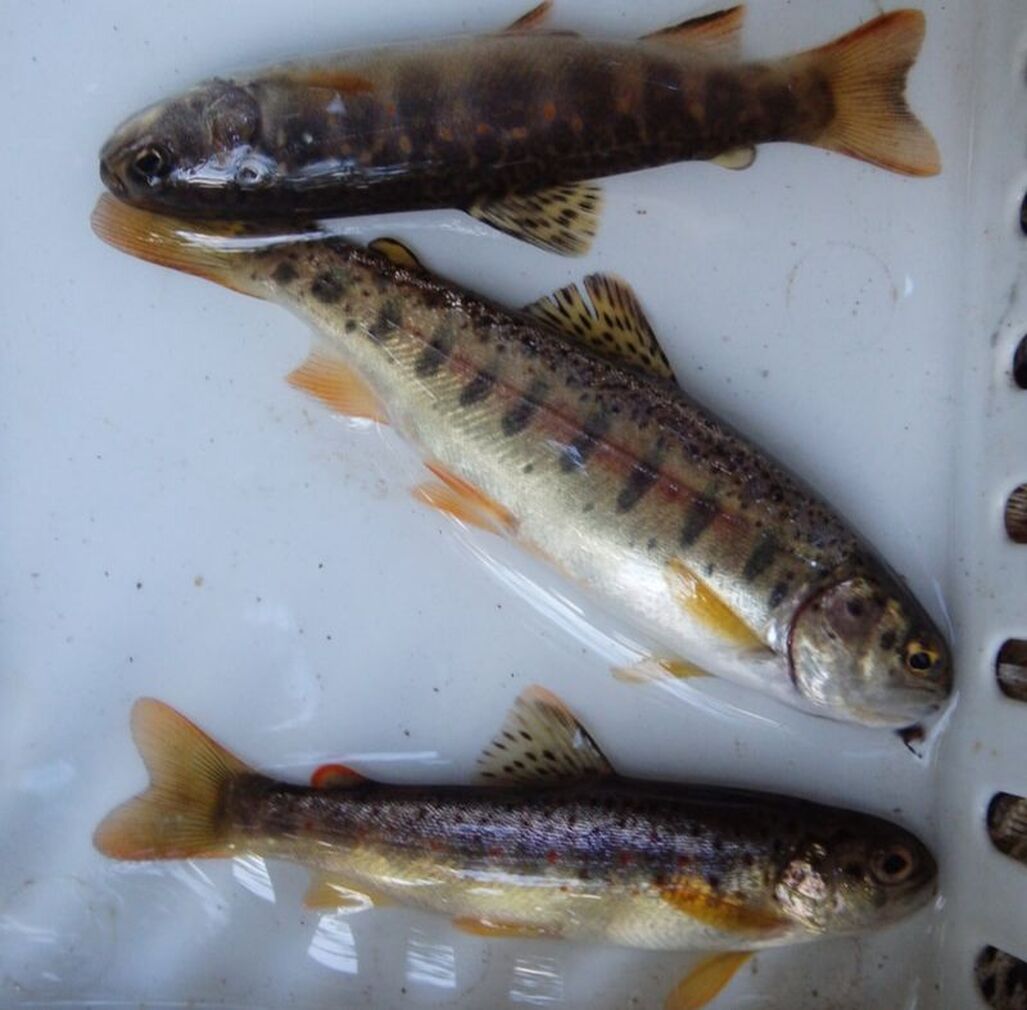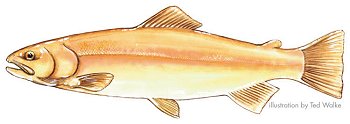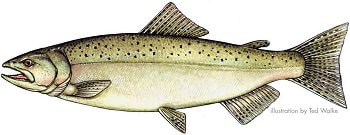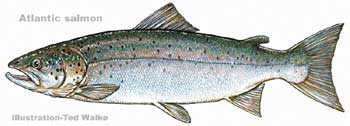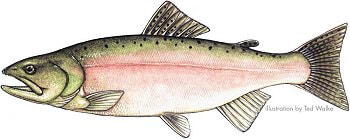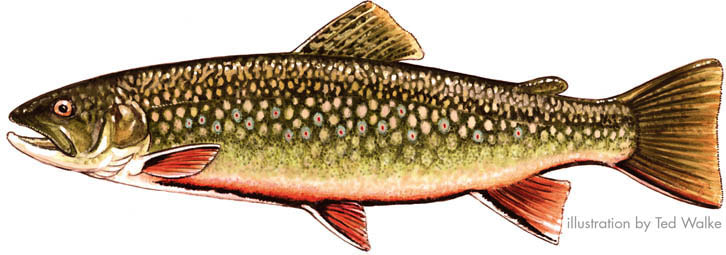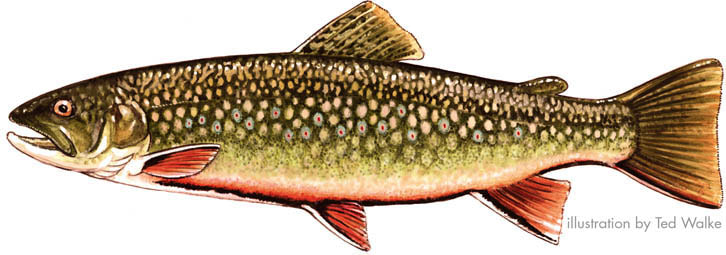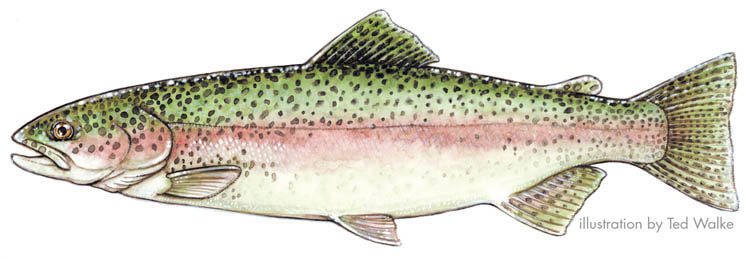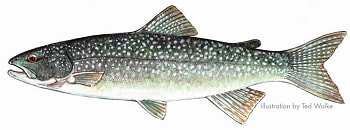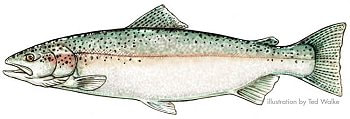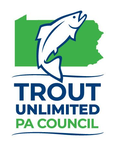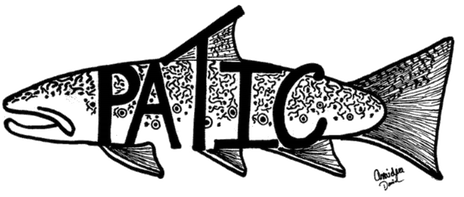Species OverviewThe Brown Trout (Salmo trutta) is not a native Pennsylvanian, although it is now naturalized and widespread here in the wild, even becoming the main trout species in streams previously dominated by Brook Trout in Pennsylvania.
|
Brown Trout were originally found in Eurasia and were stocked in the late 1800s in the United States as strains from various locations, including Scotland and Germany. Pennsylvania received its first Brown Trout in 1886. Brown Trout are considered more difficult to catch than Brook Trout. The larger ones tend to feed at night. Brown Trout are closely related to Atlantic Salmon (Salmo salar). The genus name “Salmo” is the Latin name for the Atlantic Salmon. The species name “trutta” is the Latin name for “trout.
Identification
Brown Trout are brownish in overall tone. The back and upper sides are dark-brown to gray-brown, with yellow-brown to silvery lower sides. Large, dark spots are outlined with pale halos on the sides, the back and dorsal fin, with reddish-orange or yellow spots scattered on the sides. The fins are clear, yellow-brown, and unmarked. The belly is white-yellow. Like other trout and salmon, breeding males develop a long, hooked jaw and brighten in color. Wild Brown Trout in infertile streams may grow only slightly larger than the Brook Trout there. But in more fertile streams Brown Trout that weigh a pound are common. A Brown Trout over 10 pounds is a trophy. Brown Trout may exceed 30 inches in length. The state record is more than 19 pounds.
Habitat
|
Some Brown Trout can “hold over” after they are stocked. They can last a year or more in a stream, because they are adaptable to stream changes and are not that easy to catch.The Brown Trout lives in cold or cool streams, rivers, lakes and impoundments. It is more tolerant of siltation and higher water temperatures than Brook Trout. A Brown Trout’s optimum water temperature range is 50 to 60 degrees, although it can tolerate water temperatures in the low 70s. Like Brook Trout, they are also somewhat tolerant of acidity. Brown Trout may be found in all of the state’s watersheds, from limestone spring creeks, infertile headwaters and swampy outflows to suitable habitat in the larger rivers and reservoir tailwaters.
|
All About Trout Resources
Explore the below educational resources from the Pennsylvania Fish and Boat Commission (PFBC). These resources, along with many others from environmental education providers across the state, can also be found under Curriculum Connections.
Aquatic Organisms (Trout and MORE!)
Watersheds
Recreational Fishing
- All About Trout PLAY Youth Newsletter
- Aquatic Critters Fact Sheets (e.g., Mayflies, Stoneflies, Caddisflies, and more!)
- Aquatic Field Study Permitting: Permit needed to collect macroinvertebrates in PA, even if you release them
- Brook Trout Life Cycle Poster
- Fish Habitat Improvement, featuring project maps, videos, PowerPoint presentations, and a booklet
- PLAY (Spring 2006) – Six Legs Underwater (Learn fun facts about insect family tree, how they eat and more!)
- PLAY (Spring 2013) Fish Scene Investigation (Learn how biologists study and manage fish populations in PA)
- Trout Identification
- Trouts and Salmons of PA
- Trout Water Classifications
Watersheds
- Pond and Stream Study Guide
- PLAY (Winter 2019) – Water Flows Through PA
- PLAY (Fall 2019) H20 On the Go
- PLAY (Spring 2018) Water, Water, Read All About it! (water temperature, pH, Alkalinity, Turbidity)
- PLAY (Winter 2013) Good Fishing, Needs Good Habitat (Recipe for a healthy stream, stream and lake habitat toolbox, help this stream activity)
- Wetlands and why do fish need them
- Timbering and Trout
Recreational Fishing
